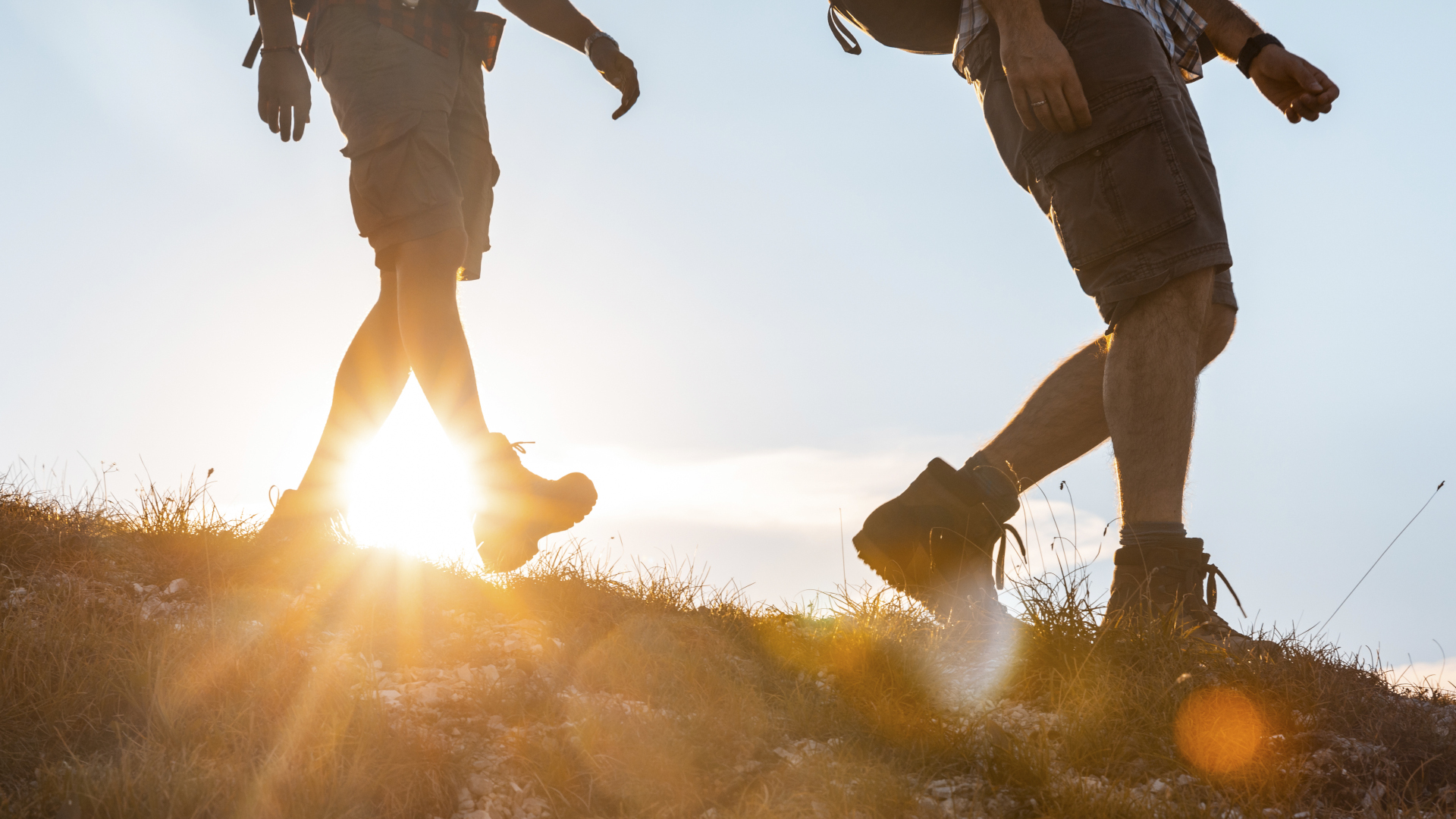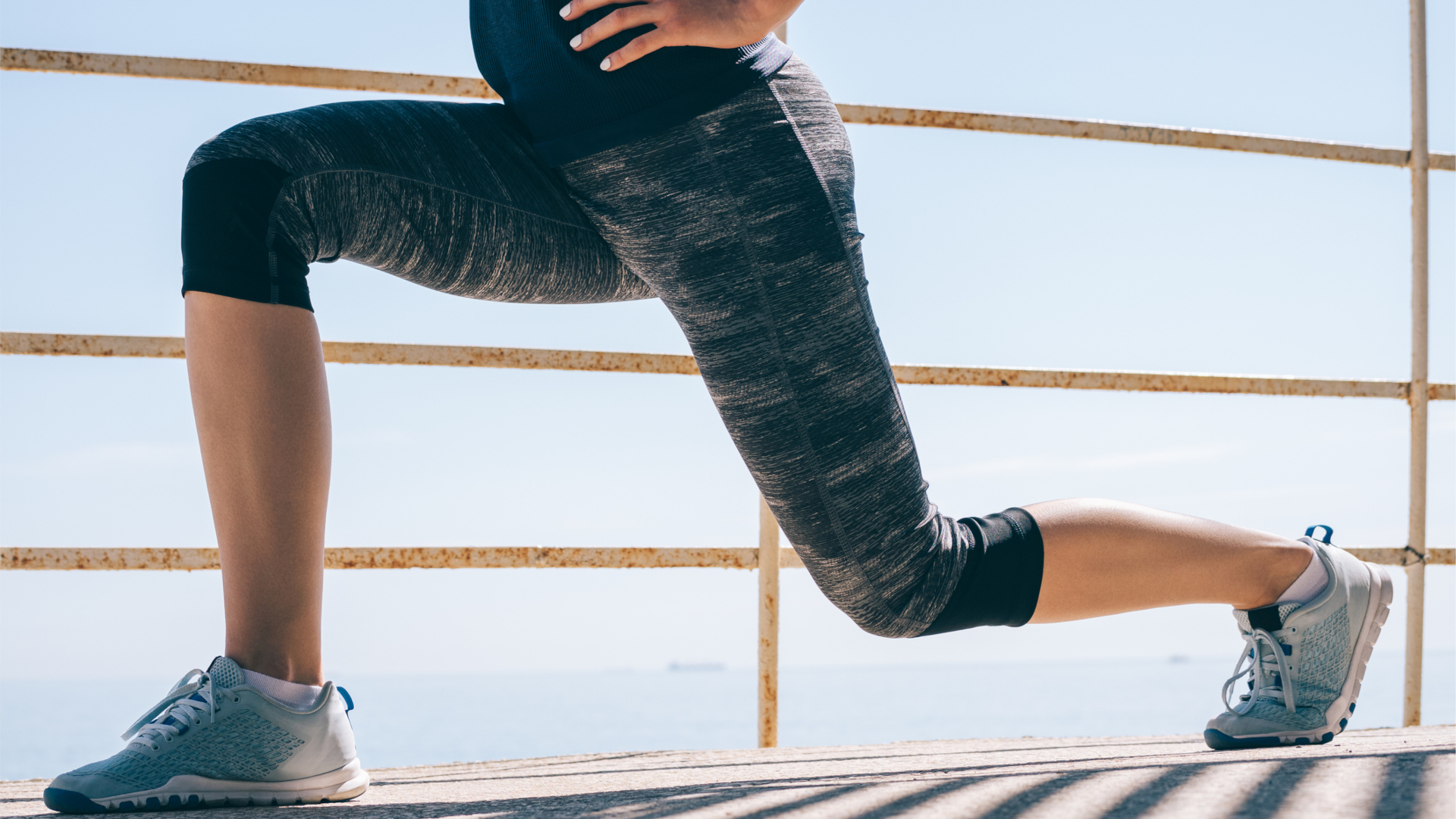What is eccentric exercise? And how does it benefit you outdoors?
What is eccentric exercise? We define the three types of muscle contraction and cover the benefits of eccentric exercise for getting stronger on the trail and the crag

If you’re in training to cover a lot of miles in your hiking boots or trail running shoes, or even on dryland between ski seasons, you’ve probably heard that you should be incorporating more eccentric exercise into your routine. But what is eccentric exercise, exactly, and why does it benefit you when you're out on mountain adventures? In this article, we define the three types of muscle contraction and cover the benefits of eccentric exercise to help you go for longer, and feeling stronger on the trail and the crag.
The truth is, almost regardless of how active you are and what kind of sports you like to do, you’ve almost definitely been doing eccentric exercises for most of your life without even knowing it. You know how when you’re hiking or running a really steep hill and you feel your thighs burning trying to control your speed? That’s your quads doing eccentric exercise. If that doesn’t sound familiar, drop down on the floor right now and do a few slow push ups, paying attention to how your triceps feel on the way down. What you feel is your triceps doing eccentric contractions.

What is eccentric exercise?
Eccentric exercise is any exercise that focuses on eccentric muscle contraction. Muscle contraction refers to any activation of muscle fibers – tightening, shortening or lengthening – that happens when you perform activity. It can occur when you’re lifting or carrying an object, pushing something or even when you’re stretching, and it’s distinct from muscle relaxation, which is when the fibers return to their low-tension state.
There are three types of muscle contraction:
- Concentric: where the muscle fibers shorten
- Eccentric: where the muscle fibers lengthen
- Isometric: where the muscle fibers remain the same length
The most common example given to understand these three movements is the good old bicep curl. Grab a hand weight or even a can of soup in your right hand and let your arm come down by your side. Place your left hand on your right bicep, and slowly bend your right elbow to bring the weight up to your shoulder. You should be able to feel your bicep tightening as it performs a concentric contraction to bend your elbow. Now, keep your bicep muscle nice and tight and slowly straighten your right arm again. That sensation, as your muscle fibers lengthen, is eccentric contraction.
Next, do another bicep curl, but stop half way and hold for 10 seconds – there may be some shaking if the weight is heavy enough. You’ve just met your first isometric contraction. Finally, put the weight down and do one more bicep curl, but instead of keeping your bicep tight as you straighten your arm and moving slowly, just let your arm drop by your side. Imagine how that would feel if you were holding a weight? Yeah, eccentric contractions are important because they provide an important braking mechanism and shock absorber, as well as generating a recoil action before a concentric movement, according to a 2019 research article by Vogt and Hoppeler in Frontiers in Physiology.

As we already mentioned, your quads are doing eccentric contractions when you're hiking downhill (or skiing or running) because when your knee is bent, the muscle fibers are lengthened, but you’re resisting the pull of gravity. If you just let your thighs relax, you’d take all the impact of each step in your knees, pick up far too much momentum and fall down.
Advnture Newsletter
All the latest inspiration, tips and guides to help you plan your next Advnture!
One other thing that’s helpful to know about eccentric contractions is that they can cause microscopic tears in your muscle fibers when you do more of them than usual, or add more load via weights. The healing process involves inflammation and usually is a little painful for a day or two afterwards, if the movement is unfamiliar, which is why you can feel sore after a big hike or a new workout – also known as Delayed Onset Muscle Soreness.

What is eccentric exercise good for?
So if eccentric exercises leave you feeling sore the next day, why would you want to do them? Well, current medical understanding is that this repair process is what contributes to your muscles getting stronger, according to the American College of Sports Medicine. Further, according to Vogt and Hoppeler’s research, there are some really persuasive potential benefits to eccentric exercise that can serve you when you’re adventuring:
- Muscle strength: regardless of your activity, strong muscles take the strain off your joints and help you to hike, run or climb for longer.
- Muscle power: hiking may not require a lot of explosive movements, which rely on muscle power, but you’ll need this for dyno moves in rock climbing as well as that last sprint to the finish line in your next race.
- Muscle coordination: anything that involves balance can benefit from better muscle coordination, including walking or running over rough terrain and scaling crags.
- Injury prevention: because stronger muscles better support joints and because eccentric contractions perform a braking action that slows you down against momentum, you reduce your chances of getting injured.
As you can see, eccentric contractions are crucial to us moving safely, helping you to do things like run downhill safely. In addition, muscles performing eccentric exercise have been found to require significantly less oxygen and energy than concentric contraction, and produce less lactic acid, according to a 2016 research article in the Journal of Physical Therapy Science, which means they’re easier to do. So, what are you waiting for?

What are examples of eccentric movements?
Isolated movements like your bicep curls are great for learning more about biomechanics, but in reality your muscles are doing eccentric contractions all the time. If you’re ready to get started with more eccentric exercise, it’s good to know that virtually any time you’re doing any movement, some muscles somewhere will be contracting eccentrically, especially if you’re moving properly. You can simply enhance this effect by slowing the movement down against the pull of gravity and engaging your muscles, so you’re increasing the load on the muscle.
Some examples of eccentric movements you might encounter in your training include:
- Quads when you’re lowering down into a squat or lunge position.
- Calves when lowering your heel down from a heel raise.
- Abdominal muscles when lowering down from an ab crunch.
- Triceps when lowering down into a push up.
- Biceps when lowering down from a pullup.

If you’re looking to incorporate more isolated eccentric exercises into your training, we suggest working with a trainer or physical therapist. Because these movements require less energy but place a lot of load on your muscles, it’s easy to overdo them which could lead to muscle damage instead of improvement.
Julia Clarke is a staff writer for Advnture.com and the author of the book Restorative Yoga for Beginners. She loves to explore mountains on foot, bike, skis and belay and then recover on the the yoga mat. Julia graduated with a degree in journalism in 2004 and spent eight years working as a radio presenter in Kansas City, Vermont, Boston and New York City before discovering the joys of the Rocky Mountains. She then detoured west to Colorado and enjoyed 11 years teaching yoga in Vail before returning to her hometown of Glasgow, Scotland in 2020 to focus on family and writing.

